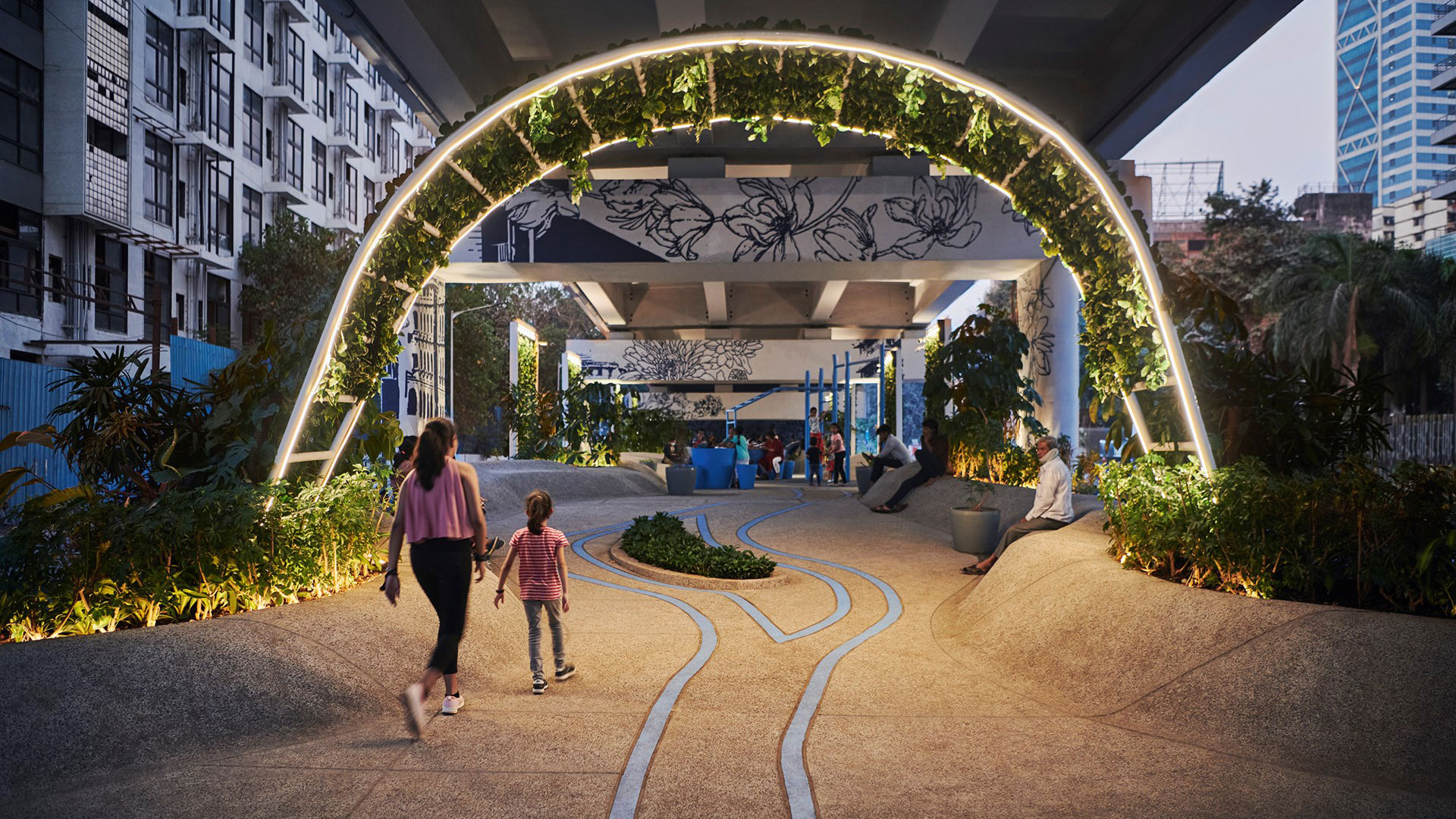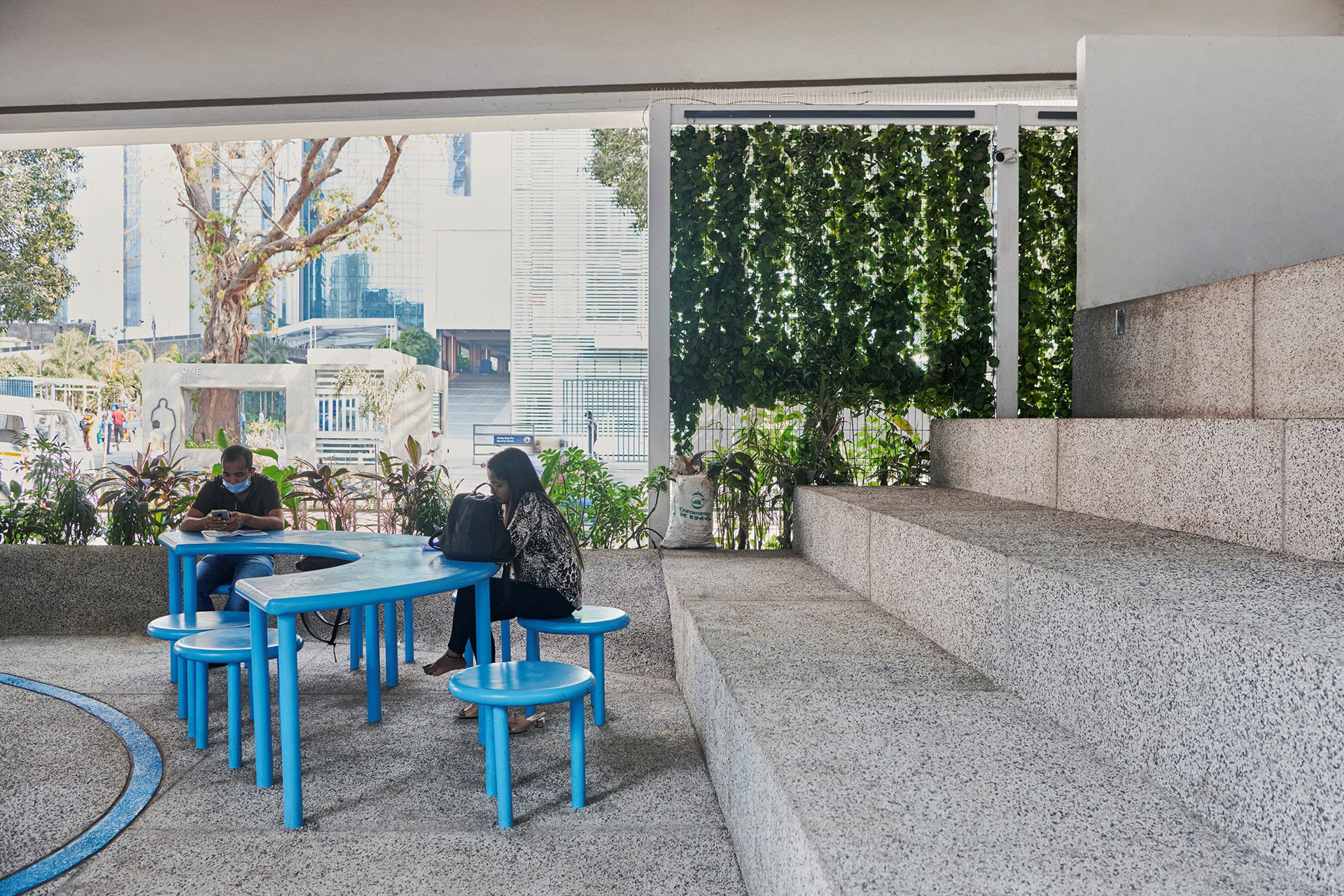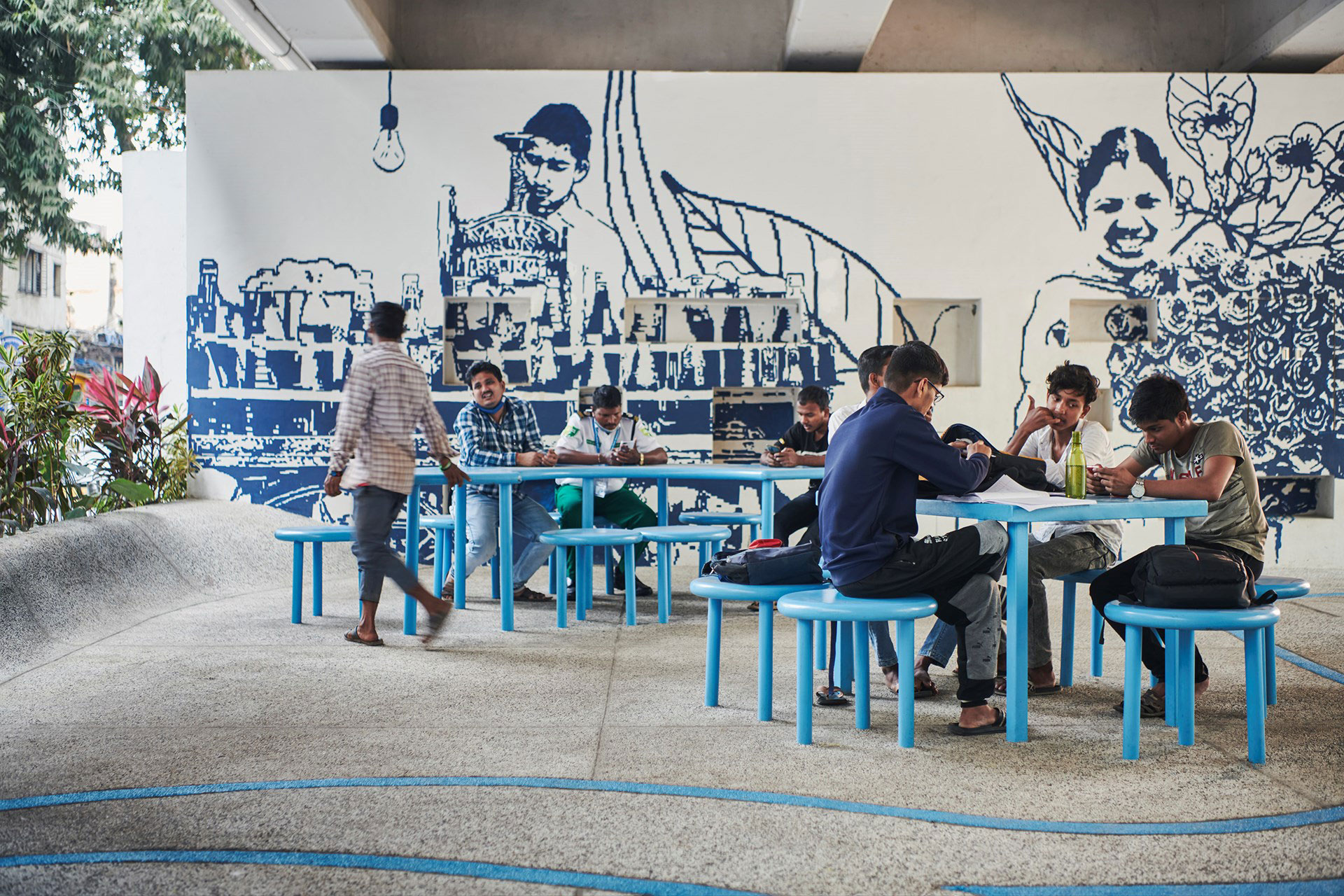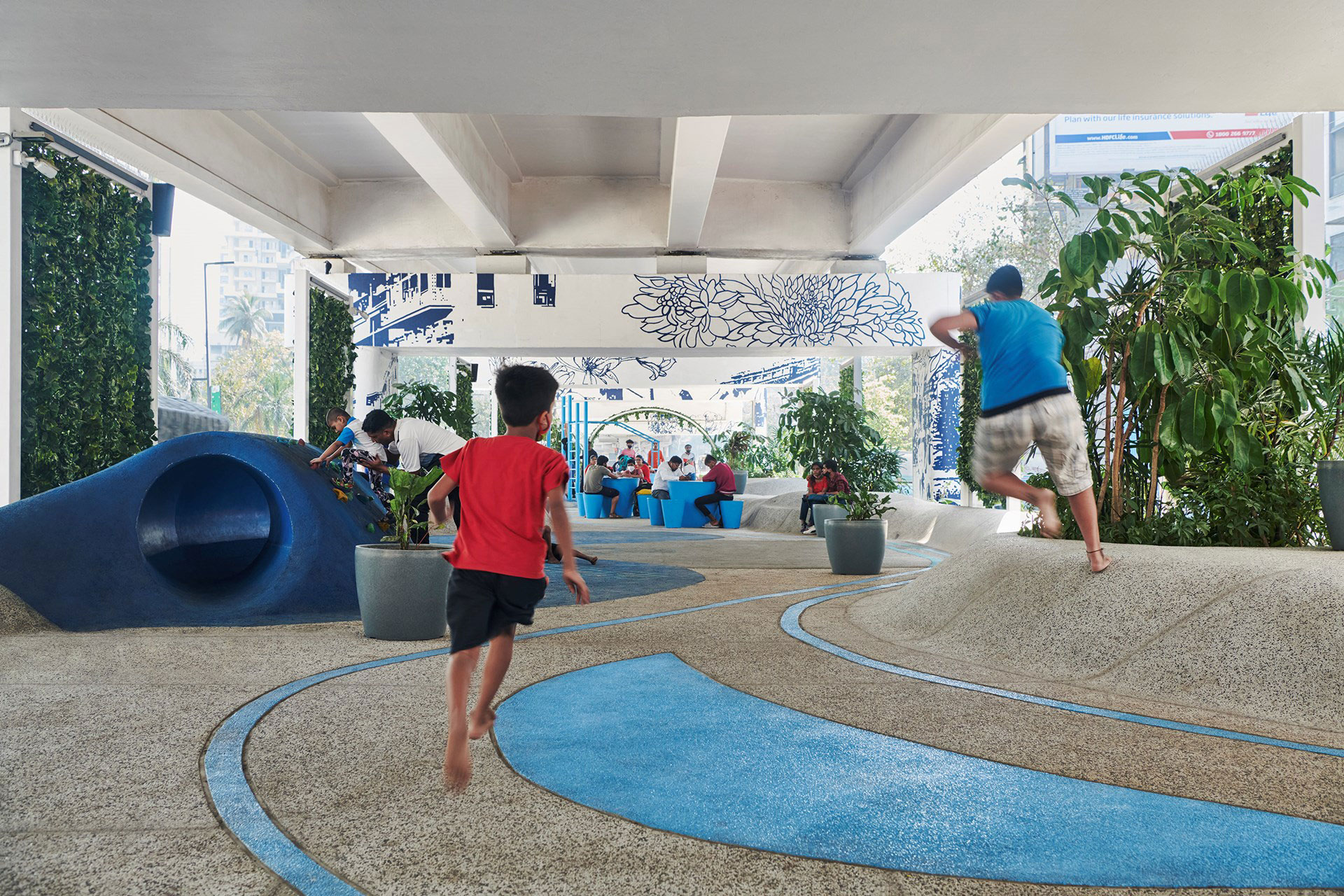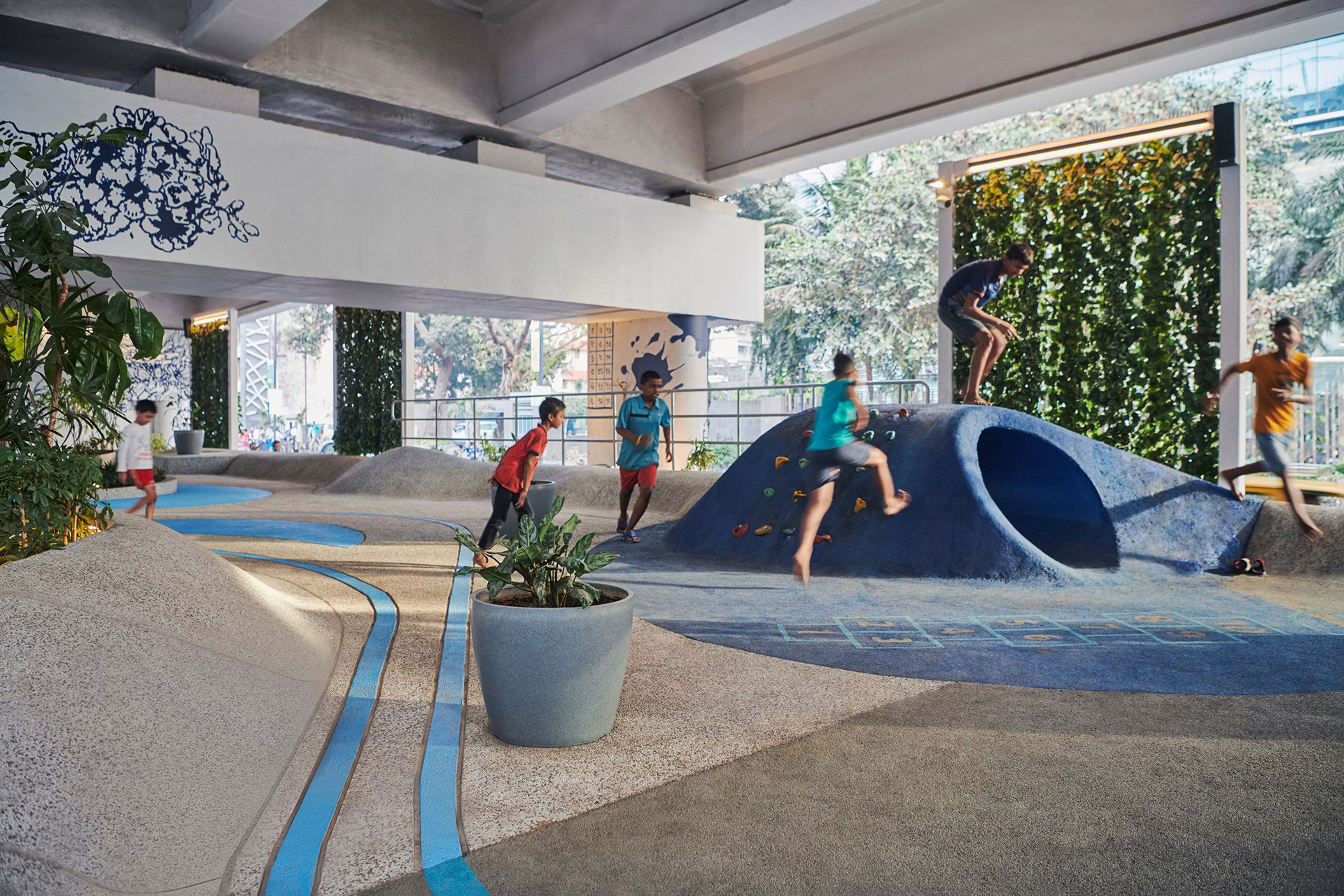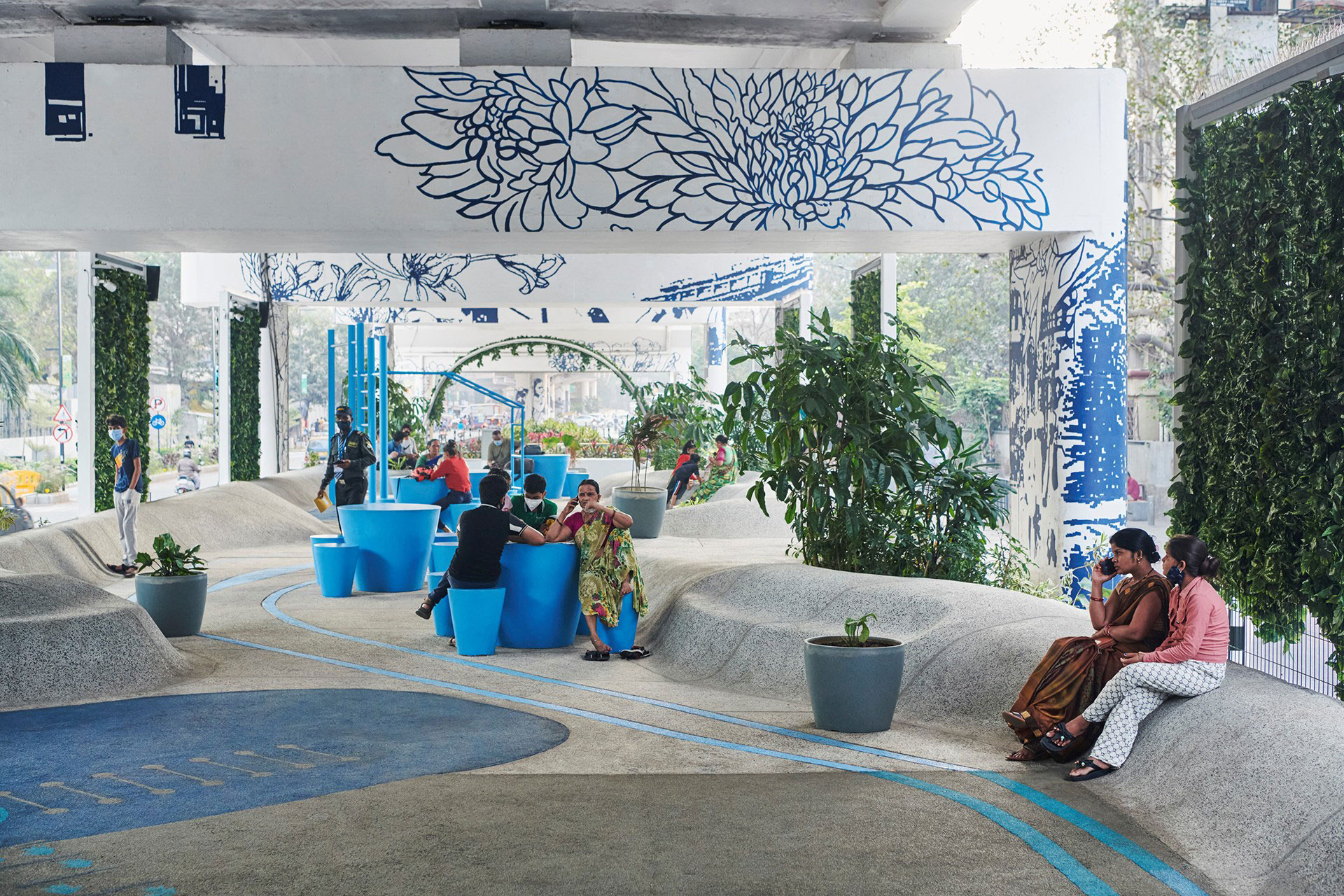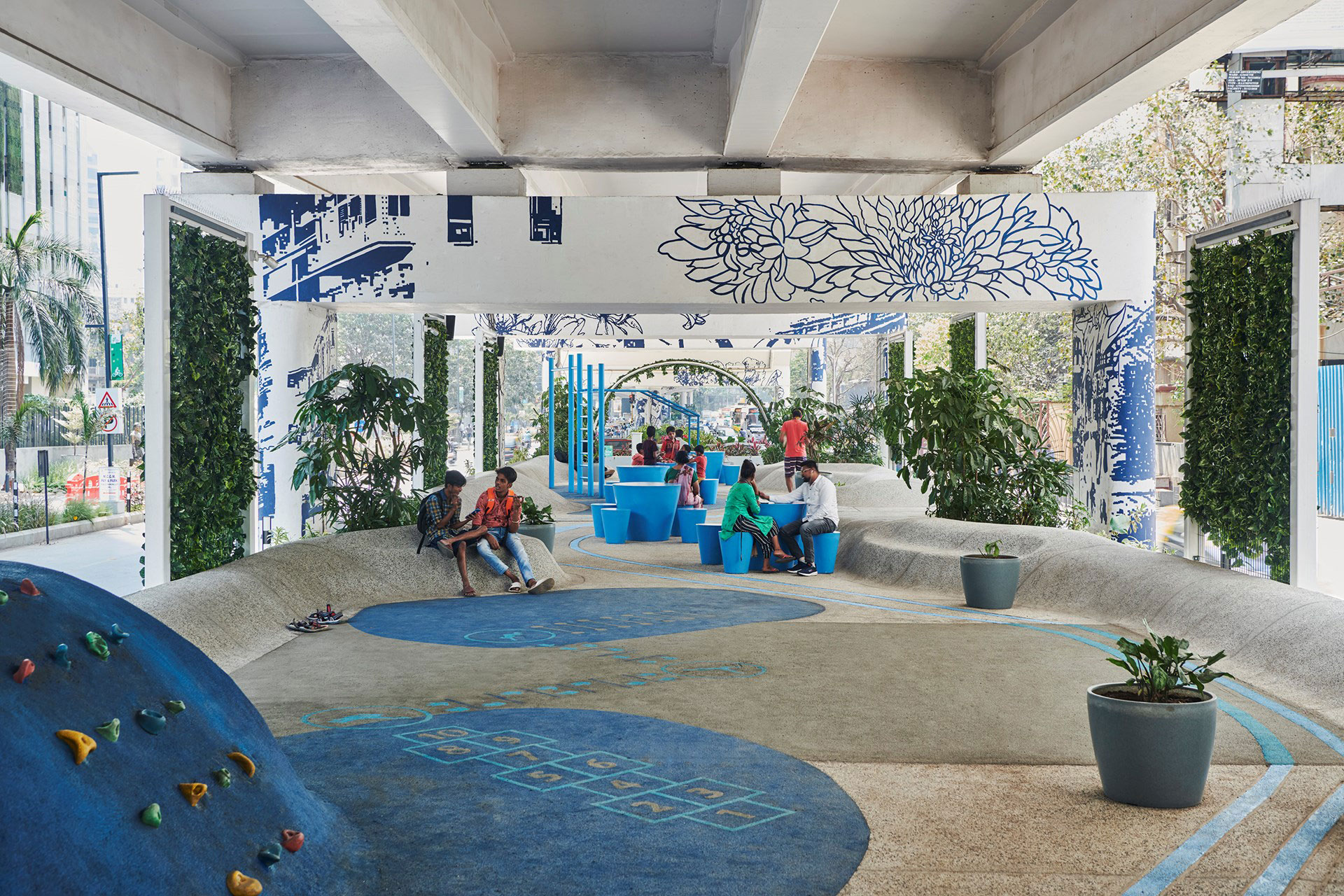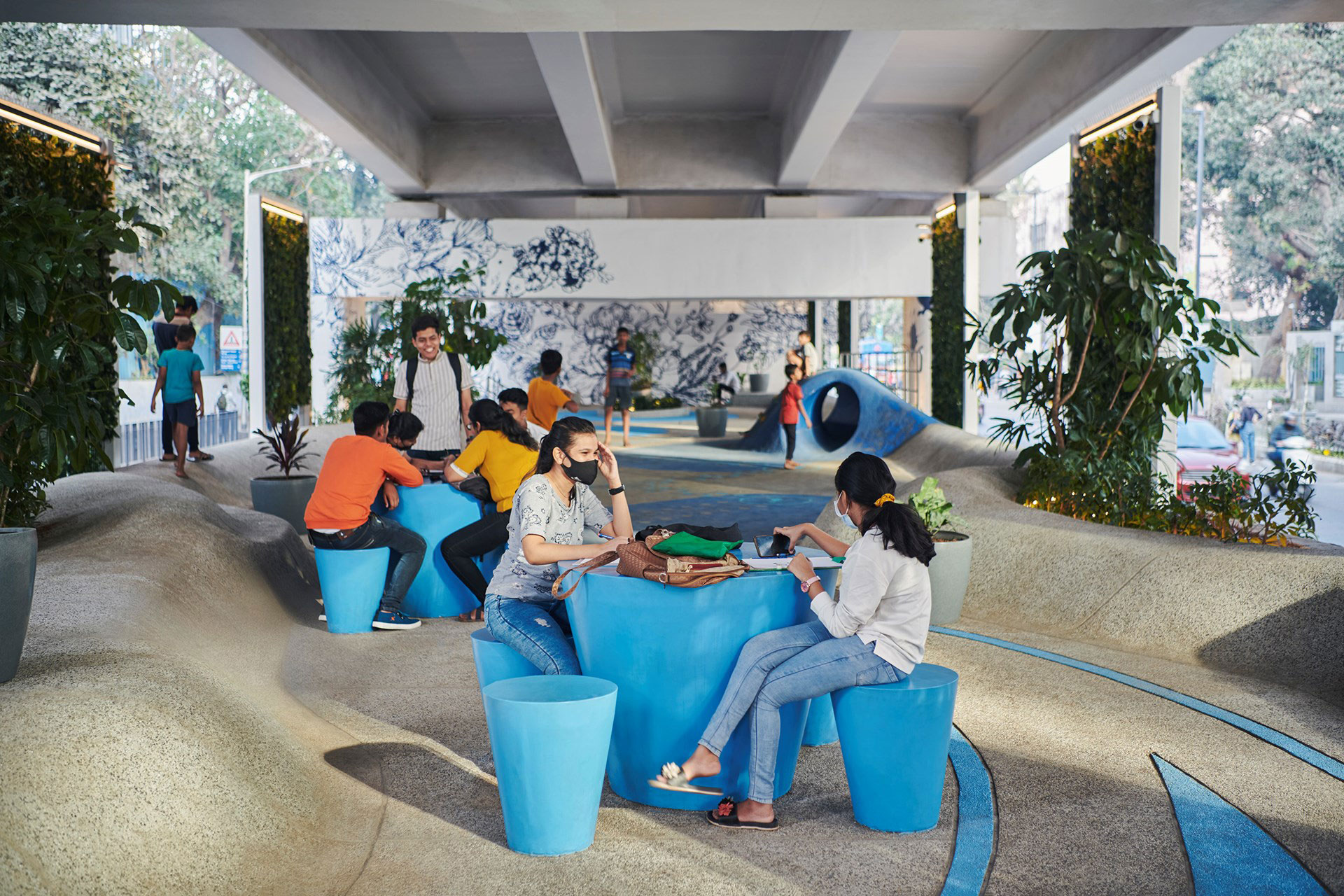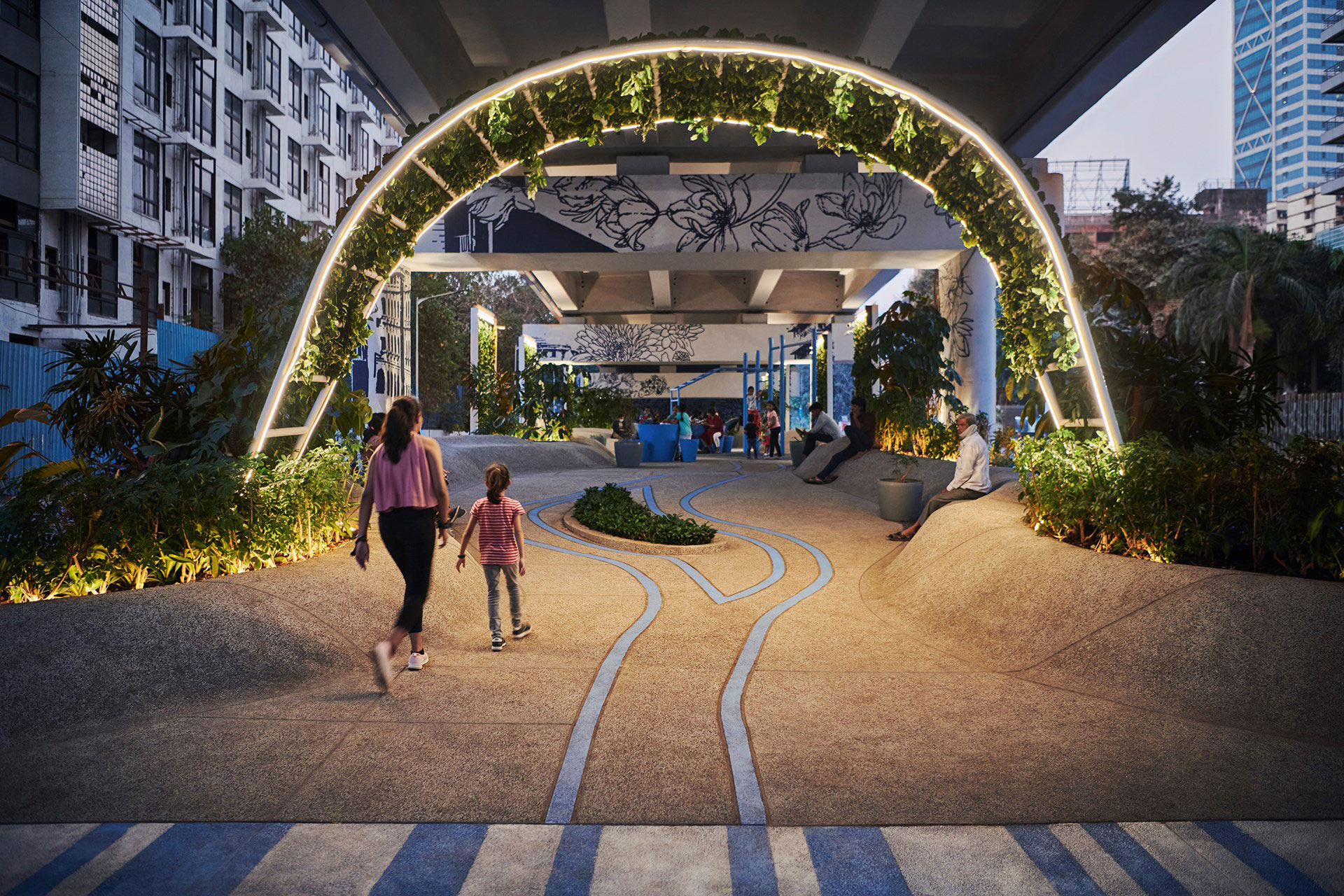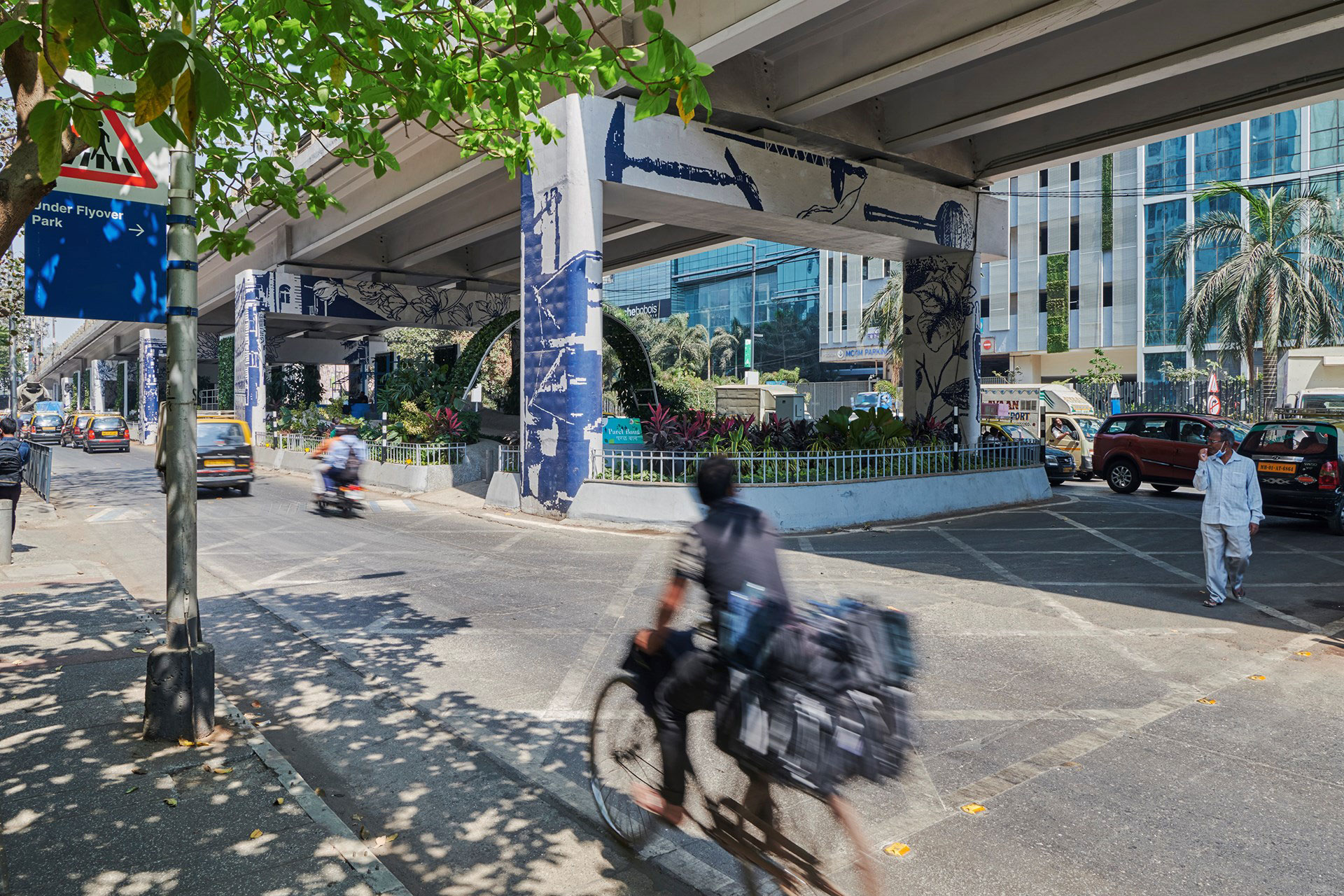“What if we expected highways to give something back to the places they cut through?” asks Stefan de Koning, an architect with MVRDV Architects. He insists, “a flyover can provide some shade in a hot city, and creates a small area of land that can’t be developed with tall buildings. It’s not such a crazy idea to make that into a public space“. The architectural intervention that Nucleus Office Parks (an office development platform owned by Blackstone in India) commissioned from local architecture firm StudioPod, which appointed MVRDV Architects as its partner, answers this question and approach. They called the project One Green Mile.
The Senapati Bapat Marg flyover is one such highway, and in its case it cuts through the heart of Mumbai. It generates noise pollution and creates a barrier to mobility between neighbouring districts. However, One Green Mile was undertaken so that the highway would give something back to the place it crosses. It is a project to improve some 1,800 m of that urban landscape that breaks up the Senapati Bapat Marg crossing. In particular, we refer here to the 200 m intervention, within the 1,800 m, for which MVRDV Architects is directly responsible.
The architectural practice’s design converts the cold and bleak concrete infrastructure into a public space for the enjoyment of the local community, with amenities, greenery and a strong visual identity. To begin with, a series of gentle ground elevations transform the two-dimensional ground space into an attractive and dynamic “3D spatial experience”. The blue colour, materials and lines unify the various aspects of the intervention so that they can be recognised as a whole. The functionality is determined by the division of the space into different public “rooms” without walls or doors: lounge, gym, games room, rest area, performance room and reading space. Finally, the vegetation, present throughout the entire route, refreshes the different areas and dampens noise pollution.
In addition to all this, cycle lanes have been added to encourage the use of bicycles, and extensive zebra crossings have been integrated to facilitate safer access for residents. An infrastructure used to transport cars is given a new purpose with One Green Mile and becomes a protected and occupied public space. The model will be repeated in the larger master plan envisaged by StudioPOD. Perhaps it will one day reach the 11+ km stretch of motorway that runs through Mumbai. “Perhaps one day we will see the end of noisy, unpleasant highways carving up our cities, but for now they are still unfortunately a necessary evil,” concludes de Koning.
Sources and images: MVRDV Architects.
RELATED STORIES
Newsletter

